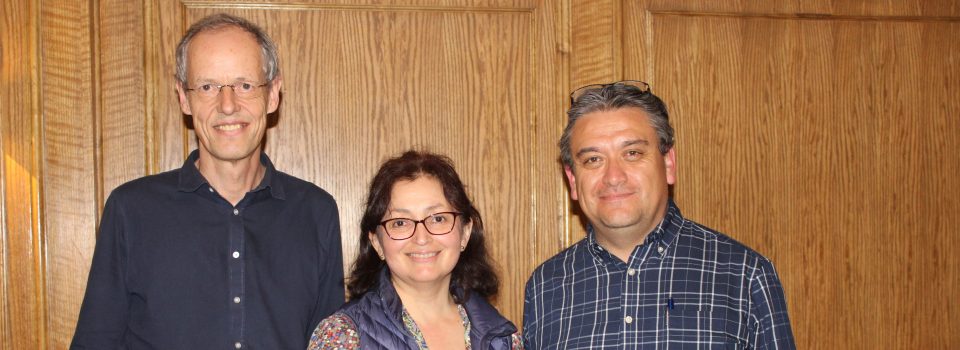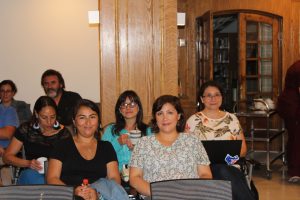IFOP Talk ” Marine communities modeling and fishing impact “
February 7th, 2020At IFOP Valparaíso Auditorium, Dr. Mariella Canales and Dr. Gustav Delius offered “Marine communities modeling and fishing impact ” talk. IFOP professionals attended and was organized by Dr. Juan Carlos Quiroz Stock Evaluation Department (DER) head, who referred to the Talk “as a necessary interaction to explore possible expansion areas in DER’s work. Currently our work is focused on scientific advice for fisheries management purposes, using a population models wide range . ”
Dr. Canales explained “Multi-specific models by size spectrum are born as a simple conceptual way of modeling an aquatic community of individuals. They recognize that body size is a central feature in the structuring and functioning of aquatic communities, capturing a significant proportion of ecologically relevant traits of organisms in an aquatic ecosystem (growth, predation, metabolism, birth, reproduction, death) . A central aspect of these models is to assume that individuals abundance increases negatively with body size, which explains remarkable regularities observed in aquatic communities. ”
During January 2020, Dr. Gustav Delius and Dr. Mariella Canales taught a course at Universidad Catolica Santiago on multi-specific models by size spectrum and the use of MIZER package. Both researchers also visited IFOP, where they presented initial results on pelagic fish community modeling in northern Chile with MIZER.
Researchers background
Dr. Delius is a Senior Lecturer at York,University UK where he works on size-based models for marine ecosystems fundamentals, and also maintains mizer modeling package.
Dr. Mariella Canales is a CAPES-UC Center researcher and has worked in the line of multi-specific size-based analyzes since her doctoral studies. Dr. Canales also has extensive experience in, stock assessment and management of Chilean pelagic fisheries monitoring.

